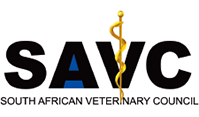TOXICITY STUDIES
The OECD Guidelines for the Testing of Chemicals is a collection of about 150 of the most relevant internationally agreed testing methods used by government, industry and independent laboratories to identify and characterise potential hazards of chemicals.
La-Bio Research offers a wide range of Toxicity Studies including:
Our Services Toxicity Studies
Acute Oral Toxicity
OECD Testing Guideline 423
Based on a stepwise procedure with the use of a minimum number of animals per step, sufficient information is obtained on the acute toxicity of the test substance to enable its classification.
The substance is administered orally to a group of experimental animals at one of the defined doses. The substance is tested using a stepwise procedure, each step using three animals of a single sex (normally females).

Acute Dermal Toxicity
OECD Testing Guideline 402
This method provides information on health hazard likely to arise from short-term exposure to a test chemical by dermal route.
Test chemicals should not be administered at doses that are known to cause marked pain and distress due to potential corrosive or severely irritant actions.
The method provides information on the hazardous properties and allows the substance to be classified for acute toxicity according to the Globally Harmonised System of classification and labelling of chemicals.

Acute Dermal Irritation-Corrosion
OECD Testing Guideline 404
This method provides information on health hazard likely to arise from exposure to liquid or solid test substance by dermal application.
This Test Guideline recommends sequential testing strategies, which include the performance of validated and accepted in vitro or ex vivo tests for corrosion/irritation.

Acute Eye Irritation
OECD Testing Guideline 405
This method provides information on health hazard likely to arise from exposure to test substance (liquids, solids and aerosols) by application on the eye.

Skin Sensitization
OECD Testing Guideline 406
This method provides information on health hazard likely to arise from exposure to test substance via intradermal injection and/or applied epidermically.
In this Test Guideline, the methods preferred over others: the Guinea Pig Maximisation Test (GPMT) of Magnusson and Kligman which uses adjuvant and the Buehler Test which uses non-adjuvant.

Acute Inhalation Toxicity
OECD Testing Guideline 403
This test provides information on health hazard likely to arise from short-term exposure to a test article (gas, vapour or aerosol/particulate test article) by inhalation.

Our Services Subacute & Subchronic Toxicity
Repeated Dose 28 Day Toxicity
Studies in Rodents
OECD Testing Guideline 407
This method provides information on health hazard likely to arise from exposure to test substance via oral administration.
The method is based on the repeated oral administration of the substance of interest during one limited period (one dose level daily for 28 days).

Repeated Dose 90 Day Toxicity
in Rodents
OECD Testing Guideline 408
This method provides information on health hazard likely to arise from exposure to test substance via oral administration.
The determination of sub-chronic oral toxicity using repeated doses may be carried out after initial information on toxicity has been obtained from acute or repeated dose 28-day toxicity tests.
The method is based on the repeated oral administration of the substance of interest over a prolonged period (one dose level daily for 90 days).

Subacute Inhalation Toxicity:
28-Day Study
OECD Testing Guideline 412
This revised Test Guideline 412 (TG 412) has been designed to fully characterize test article toxicity by the inhalation route following repeated exposure for a limited period of time (28 days), and to provide data for quantitative inhalation risk assessments.
It was updated in 2017 to enable the testing and characterisation of effects of nanomaterials tested.

Subchronic Inhalation Toxicity:
90-Day Study
OECD Testing Guideline 413
This revised Test Guideline 413 (TG 413) has been designed to fully characterize test article toxicity by the inhalation route following repeated exposure for a period of 90 days, and to provide data for quantitative inhalation risk assessments.
It was updated in 2017 to enable the testing and characterisation of effects of nanomaterials tested.

Our Services In Vitro Toxicity Studies
In Vitro Toxicity Studies
La-Bio Research has various cell and organism models available to be used for the reliminary / alternative toxicity classification of test items.
Techniques such as cell culture toxicity and In Vitro irritation models can be used for testing as starting points to avoid testing of severe toxic / corrosive substances in animals.
Our Services Environmental Toxicity Studies
Acute Aquatic & Chronic Aquatic Toxicity Studies
Please contact us for more information on the Environmental toxicity studies we offer.

